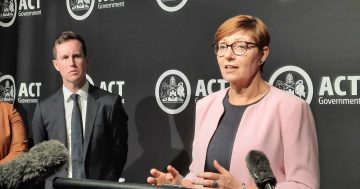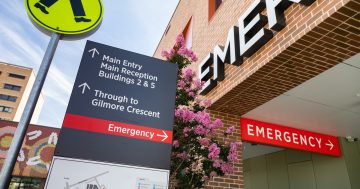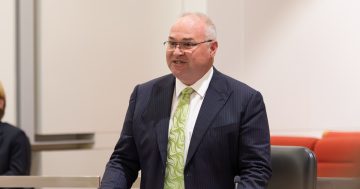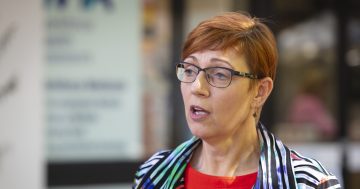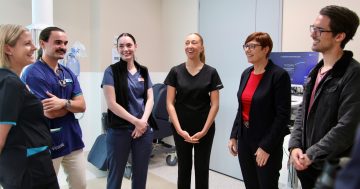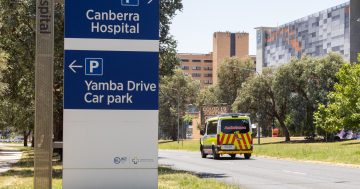
Health Minister Rachel Stephen-Smith. Her office was alerted during the caretaker period that there could be a problem. Photo: Ian Bushnell.
Canberra Health Services first alerted the office of Health Minister Rachel Stephen-Smith in late September and early October last year that growing demand was outpacing funding in the ACT’s hospitals and health facilities.
However, the ACT Government says the early data was not sufficient enough to come to any definitive conclusions about where it was heading.
It was also after the Pre-election Budget Update on 18 September and during the caretaker period ahead of the 19 October election.
“While the government would not have been in a position to take Budget decisions during the caretaker period, CHS was also not in a position to provide definitive advice at that time,” a spokesperson said.
The caretaker period ran from 13 September through to 6 November, and information provided by the directorates to ministerial offices during this time was limited, the spokesperson said.
“However, CHS did provide some advice in late September/early October on activity observations for the early part of the financial year and was well prepared to brief the incoming Health Minister and Treasurer in early November,” the spokesperson said.
“The full impact of the increased demand was finalised in mid-January 2025, in line with the usual timing of the Budget Review being released in February.”
That involved a $227 million top-up, contributing to a $350 million blowout in the Budget bottom line to a record deficit of almost $1 billion.
The early advice to Ms Stephen-Smith’s office based on preliminary activity data was that growth in the numbers of people turning up to the hospitals and other facilities was outpacing funding.
The government denies hiding the information from voters, saying it was not definitive or detailed enough to warrant alarm.
The spokesperson said the high demand across the July-September quarter was driven by a busy winter season and the opening of the new Critical Services Building, something that was factored in.
“It was anticipated that an increase in demand would be seen with the opening of the new facilities – a phenomenon experienced in other jurisdictions when a new hospital facility has opened,” the spokesperson said.
It was not possible to say on the basis of one quarter’s data that this would extend to the rest of the financial year, but activity continued to increase past the PEBU and the caretaker period, placing further strain on CHS resources.
“Activity reporting and budget reconciliation can only be completed following verification and finalisation of the data to ensure organisations can accurately consider trends and demand on resources when forecasting impacts on the remainder of the financial year,” the spokesperson said.
By November, the surge in demand was enough of a trend for Ms Stephen-Smith and new Treasurer Chris Steel to be warned of the potential need to top up the system in the mid-year Budget review in February.
But at that time, further work was still required to fully understand the potential impact on the Budget, the spokesperson said.
The incoming ministers asked CHS to work with Treasury to determine how much more funding would be required, including where any savings could be made.
The new Expenditure Review Committee (ERC) started meeting in December in preparation for the Budget Review and was updated on the increased activity in hospitals and Walk-in Centres.
In January, the ERC was further updated on the demand surge and advised how much additional funding was needed to maintain services for 2024-25.
The spokesperson said the level of demand had not subsided and continued to be sustained across the ACT health system this year.
“Nearly all departments and services within the health service have experienced activity growth,” the spokesperson said.












